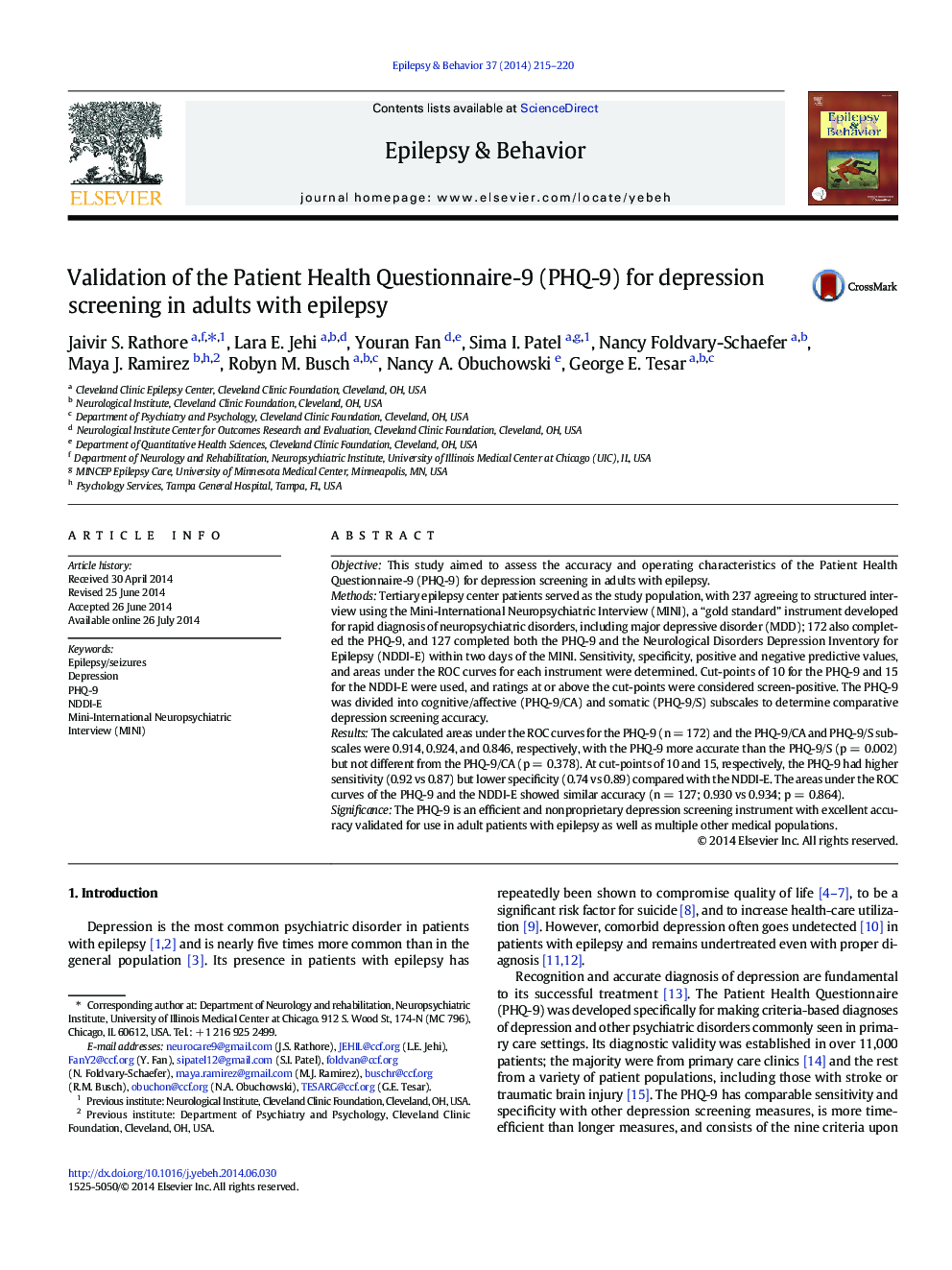| Article ID | Journal | Published Year | Pages | File Type |
|---|---|---|---|---|
| 6012219 | Epilepsy & Behavior | 2014 | 6 Pages |
â¢Validation of the PHQ-9 for depression screening in adults with epilepsyâ¢Diagnostic accuracy of the PHQ-9, PHQ-2, and NDDI-E tested using the “gold standard” MINI testâ¢High-powered prospective study at a level 4 epilepsy center with a diverse cohortâ¢Offers free nonproprietary alternative to screen depression in adults with epilepsyâ¢Highlights relatively underreported and treated psychiatric comorbidity in epilepsy
ObjectiveThis study aimed to assess the accuracy and operating characteristics of the Patient Health Questionnaire-9 (PHQ-9) for depression screening in adults with epilepsy.MethodsTertiary epilepsy center patients served as the study population, with 237 agreeing to structured interview using the Mini-International Neuropsychiatric Interview (MINI), a “gold standard” instrument developed for rapid diagnosis of neuropsychiatric disorders, including major depressive disorder (MDD); 172 also completed the PHQ-9, and 127 completed both the PHQ-9 and the Neurological Disorders Depression Inventory for Epilepsy (NDDI-E) within two days of the MINI. Sensitivity, specificity, positive and negative predictive values, and areas under the ROC curves for each instrument were determined. Cut-points of 10 for the PHQ-9 and 15 for the NDDI-E were used, and ratings at or above the cut-points were considered screen-positive. The PHQ-9 was divided into cognitive/affective (PHQ-9/CA) and somatic (PHQ-9/S) subscales to determine comparative depression screening accuracy.ResultsThe calculated areas under the ROC curves for the PHQ-9 (n = 172) and the PHQ-9/CA and PHQ-9/S subscales were 0.914, 0.924, and 0.846, respectively, with the PHQ-9 more accurate than the PHQ-9/S (p = 0.002) but not different from the PHQ-9/CA (p = 0.378). At cut-points of 10 and 15, respectively, the PHQ-9 had higher sensitivity (0.92 vs 0.87) but lower specificity (0.74 vs 0.89) compared with the NDDI-E. The areas under the ROC curves of the PHQ-9 and the NDDI-E showed similar accuracy (n = 127; 0.930 vs 0.934; p = 0.864).SignificanceThe PHQ-9 is an efficient and nonproprietary depression screening instrument with excellent accuracy validated for use in adult patients with epilepsy as well as multiple other medical populations.
